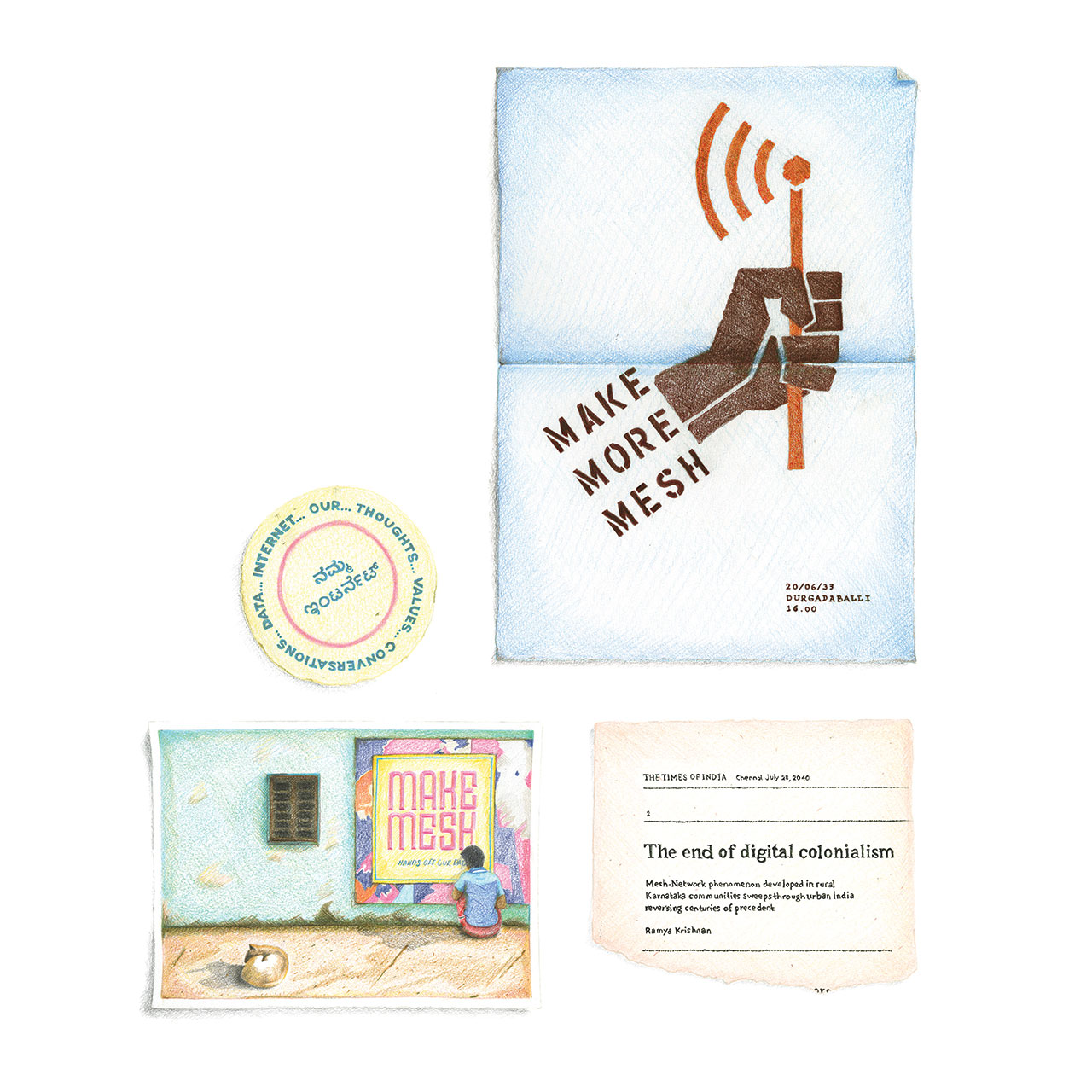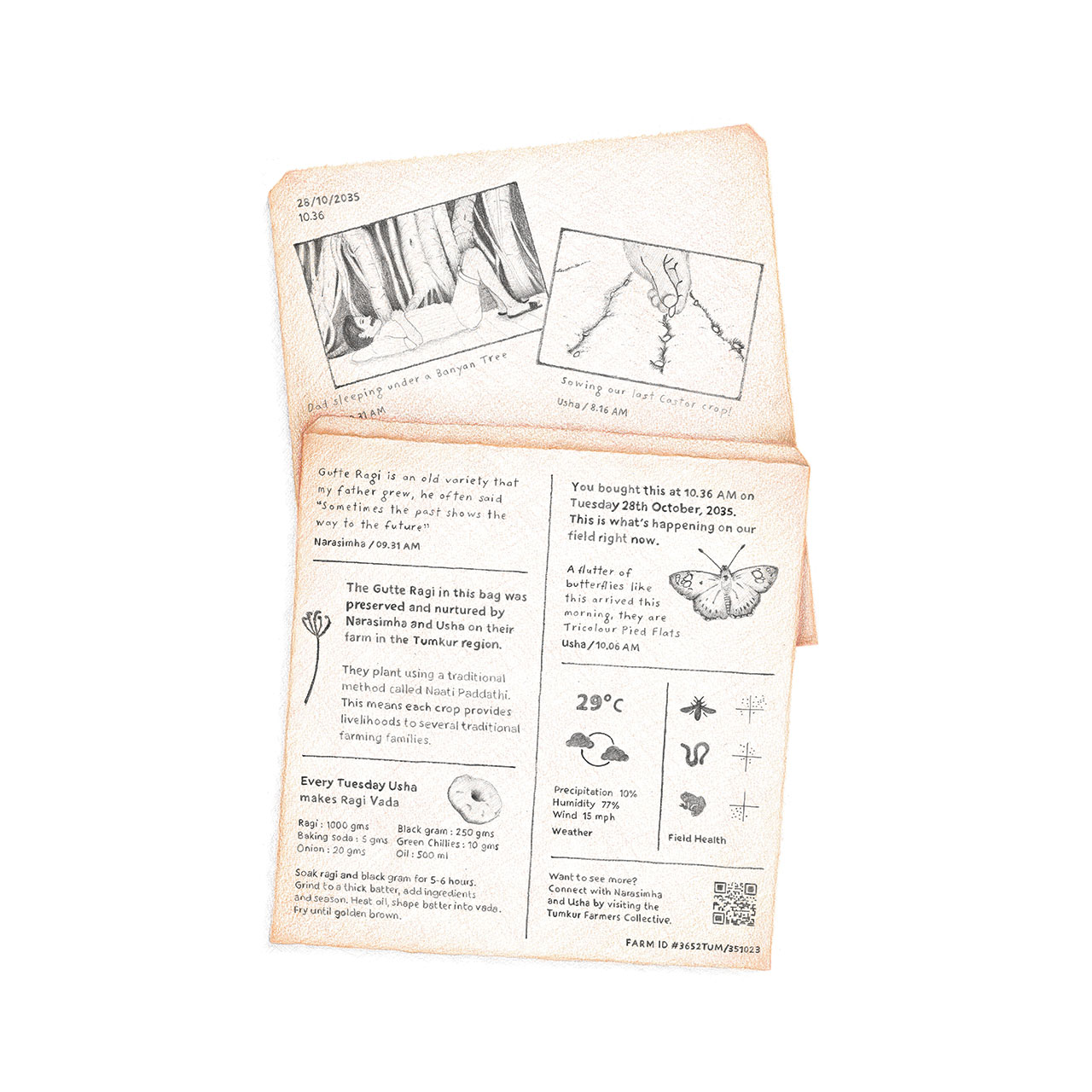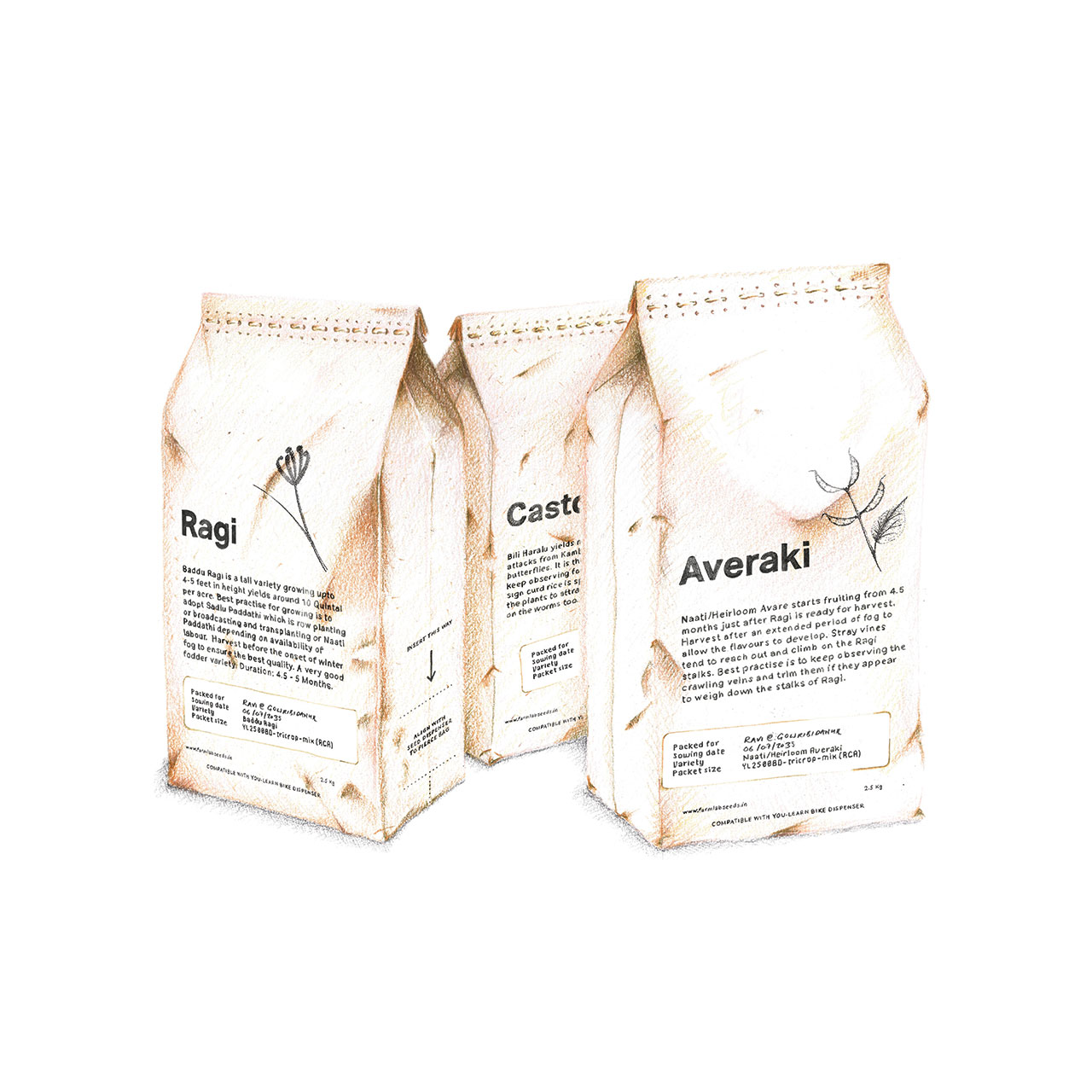Artefact 07
Mesh Advocacy Ephemera
By 2040, the villages of Karnataka are exemplars of possible new approaches to the development of decentralised networks, a grassroots phenomenon that has achieved widespread popularity in both rural and urban areas. What began as a campaign by a single rural hack lab in Durgadahalli quickly grew, with pamphlets and murals helping it spread across India.
Asha and Jayalakshmi are exhausted. They’ve just closed the door on the Mesh Museum’s ‘We Did It’ party. The whole of Durgadahalli turned out to celebrate. They can still hear the chants of “Mesh it up good!” in the distance as people make their way home past late night coffee and snack stalls. It’s not every day that film stars, heads of state, and village communities party together. This is what change looks like. The after-party of a national movement that started in a village in south Karnataka. The museum had never been so busy. Asha’s phone beeps constantly, as messages pour in from friends congratulating her on the news in India Today about ‘full mesh coverage’ being achieved across the country. No longer can any government listen in on people’s conversations. No longer can US and Chinese big tech organisations steal data from people in India. No longer can Monsanto use the Internet to advertise sterile seeds to India’s farmers.
It has been 15 years since Dinesh and Vidya first wrote out the instructions meant to guide the development of the mesh. And just 8 years since Asha first met Jayalakshmi and began working with her. Not long after, they had started being interviewed about the future of the Internet, having to explain again and again what a Mesh Maker was and what the role of a Data Steward was. This morning the lead story on the Times of India app was “The end of digital colonialism”: they had come a long way. Dinesh’s tears as he left the party before things got too wild said everything. From a village in Karnataka to Delhi and beyond, he had kicked off a movement that changed everything.







